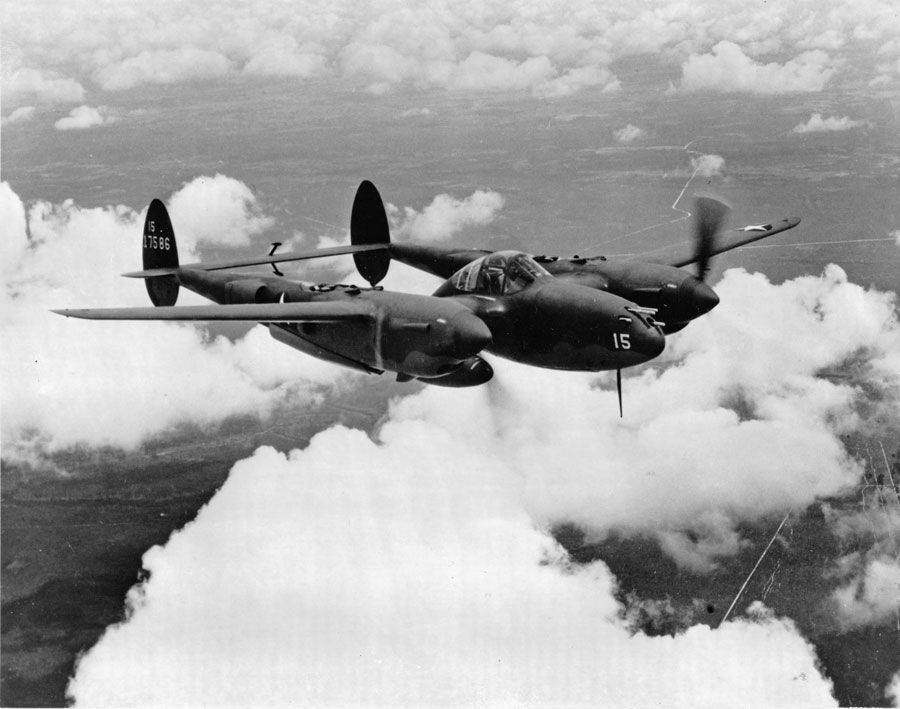Lockheed P-38G Lightning
This aircraft is currently undergoing restoration offsite.
One of the most recognizable American fighters of World War II the Lockheed P-38 was designed in 1937 as a high-altitude interceptor for the U.S. Army Air Corps. It was a radical departure in design philosophy by American fighter standards with its distinctive twin engine and twin tailed design and heavy armament of a 23mm cannon and four .50 caliber machineguns in the nose. The prototype first flew in January 1939. The P-38D was the first version of the aircraft considered to be combat ready. It entered service in August 1941. The P-38F and P-38G featured several changes to the basic design intended to improve the aircraft’s combat ability. These changes included the addition of racks under the wings for bombs or drop tanks and a modification to the flaps that allowed them to be dropped slightly during combat to improve maneuverability. Having been designed to intercept bombers and like most of the other twin-engine fighters designed by all the combatants before and during World War II the Lightning proved to be generally inferior as a fighter to many of its single engine contemporaries. Modified versions of the Lightning proved very capable as high speed photographic reconnaissance aircraft and as pathfinders for bomber units.
Wingspan | 52 ft |
Length | 37 ft 10 in. |
Height | 12 ft 10 in. |
Weight | 17,500 pounds (loaded) |
Maximum Speed | 414 MPH |
Service Ceiling | 44,000 ft |
Range | 1,300 miles |
Engines | Two Allison V-1710-51 piston engines with 1,600 horsepower each |
Crew | 1 |
Manufacturer
Lockheed
Markings
U.S. Army Air Forces, 35th Fighter Group, 39th Fighter Squadron, Port Moresby, New Guinea, 1942
Designation
P-38G “Dumbo”
Serial Number
42-12847
